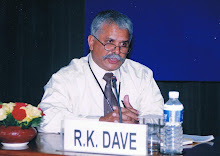No amount of “material preparedness” works during the extreme incident. Backup(s) communication, power generators or storage of emergency inventories are good in pre-disaster senerio. Everything will stop working at the site of incident after impact, even with hundreds of cascaded and co-located redundancies !
Support has to flow-in from the nearest unaffected locations. There are numerous lesions attesting and re-attesting several of the critical “preparedness issues” but unfortunately learning’s are not proportional.
The first and most critical factor in the equation of “resilience” is the “human factor”. “Selfless attitude” and ability to understand and act on receiving “alerts and warning” are major contributors in saving lives and property. Finding of my research attests “increase in selfishness increases with severity of incident and environmental stresses”.
Increased “selfishness” during crisis impacts emergency response management adversely where as “endurance and cooperative attitude” is extremely helpful in restoring the situation. You have pointed out very important “character” of “resilient society” . But this need to be highlighted and presented in many ways all through the world, specifically in the vulnerable countries, that “resilience” starts with “selflessness”.
The first responder in any situation is the person next to you and that is why – ability to understand alert/warning and attitude to react in a selfless manner is more crucial then a high-tech support reaching to you after a laps of one hour.
I congratulate all Japanes for their endurance and selflessness and wish them a quick recovery.
Wednesday, March 30, 2011
Subscribe to:
Post Comments (Atom)



No comments:
Post a Comment